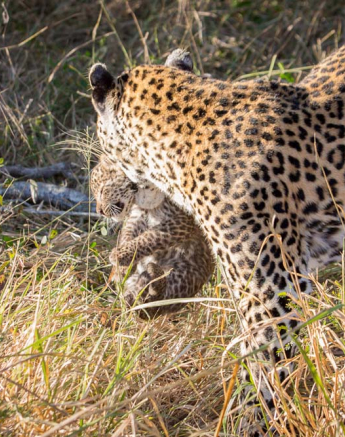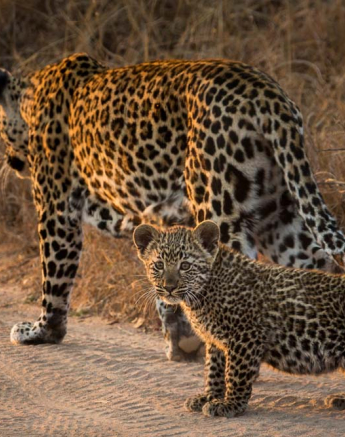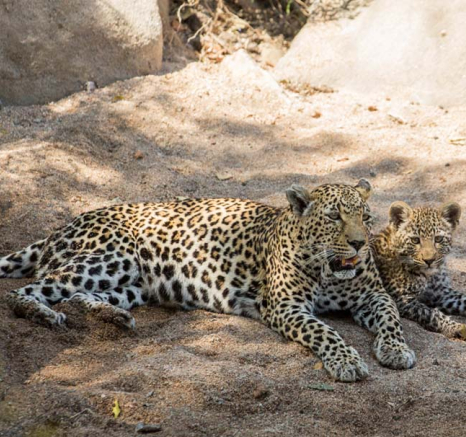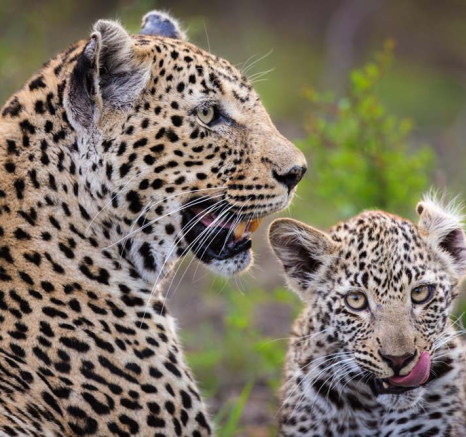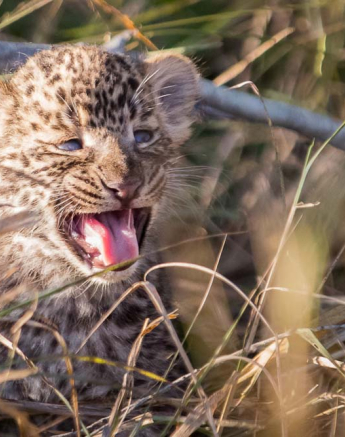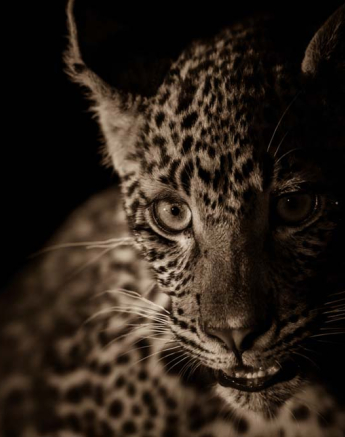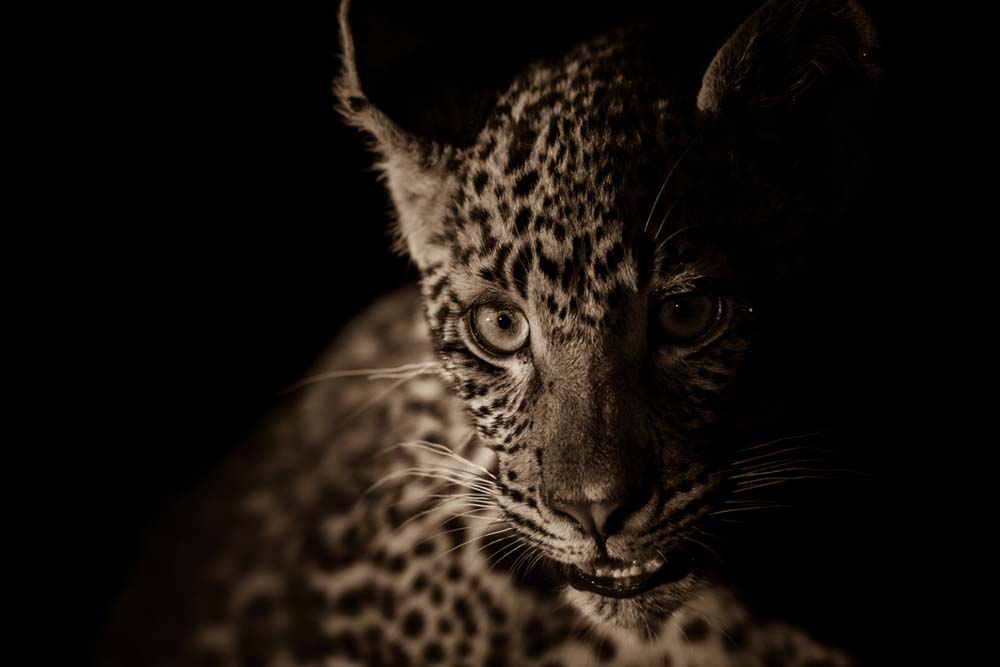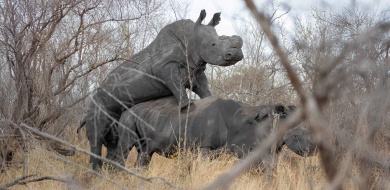it’s all about the leopards (part 3)
on Feb 10, 2015In Part 1 of “It’s all about the Leopards” I covered our resident males and in Part 2 I covered the resident females of Sabi Sabi. In this edition I will wrap up on our resident leopards by covering the cubs. These cubs are usually high on the lists of most guests, because honestly there’s not much out there that can beat a sighting of a leopard cub!
Tortilis male (22-23 months old)
I’ve added the Tortilis male with the other cubs because he can still be found with his mom on rare occasions, the Warthog Wallow female, and is still not old enough to compete with any of the other territorial males.
The name Tortilis was given to this male because he was first spotted in one of our Msuthlu River crossings named Tortilis Crossing. The first time I ever got to see him was when I was still a trainee here at Sabi Sabi. It was a special sighting because it was also the first leopard cub I had ever seen. Warthog Wallow was leading him to a kill and I managed to get a photograph of him posing for a second just before crossing the road. The ultimate sighting of this leopard was when I approached a sighting only to find him and Warthog Wallow lying on a fallen tree, side-by-side waiting for a hyena to finish eating Warthog Wallow’s well deserved kill.
Nowadays the Tortilis male can be found around Bush Lodge in his mother’s territory, often within Bush Lodge itself. This area falls under the Maxabeni male’s territory. Maxabeni, who is not Tortilis’ father, will not tolerate him in his territory, and we have already seen Maxabeni try to send him a message recently and treed the young Tortilis male. Maxabeni had sent him to the flimsiest of branches and Tortilis had to wait a long time for Maxabeni to leave. As Tortilis grows, we will probably see less of him as he will start looking for his own territory, a distance away from Maxabeni’s territory which forms part of most of Sabi Sabi’s Northern property. Who knows, maybe he will one day compete Maxabeni for his territory.
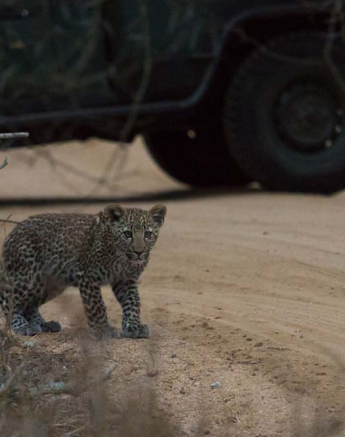
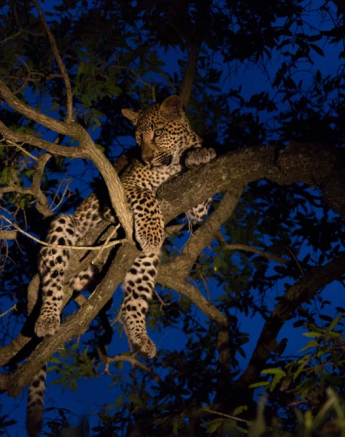
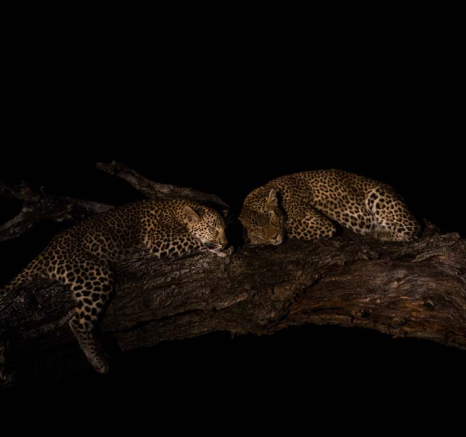
Little Bush’s Cub (11-12 months old)
Little Bush, as I mentioned in Part 1, is a very shy female, and hence we only started getting glimpses of her cubs after quite some time after they were born. She initially had two cubs, one male and one female. Two were then reduced to one cub after a few months. The Sandriver male leopard was found deep in Maxabeni’s territory and was on a mission to find and kill Little Bush’s cubs. I remember the sighting we had where there was a stand off between Little Bush and Sandriver. Little Bush refused to give up because she knew what would be the outcome if she would. The next day the Sandriver male was nowhere to be found and we were all hoping that he didn’t find the little cubs. After about a week we found tracks of Little Bush, but with tracks of only one cub. Eventually we found her and the female cub. We knew then that she had lost the male, but we were still glad that she didn’t lose both cubs.
To the present day, Little Bush’s cub will usually only be found when Little Bush has made a kill. Otherwise she will be hiding in the Msuthlu riverbed in the vicinity of Little Bush Camp. At times she is just like her mom, elusive and a bit cranky when she sees vehicles. Therefore we give both leopards a lot of space when we spot them and only allow two vehicles to view them at a time. The only time she is relaxed is when she is up a tree, and let me point out that she is probably then one of the best leopards to photograph on the property. She will pose perfectly on Marula trees and one would think that God created Marula trees just for her. Once she comes down, it’s back to square one, and will disappear into the bushes.
I have no doubt that she will provide guests with the opportunity to take many special photographs and maybe a few of her photographs will grace the walls of homes as well.
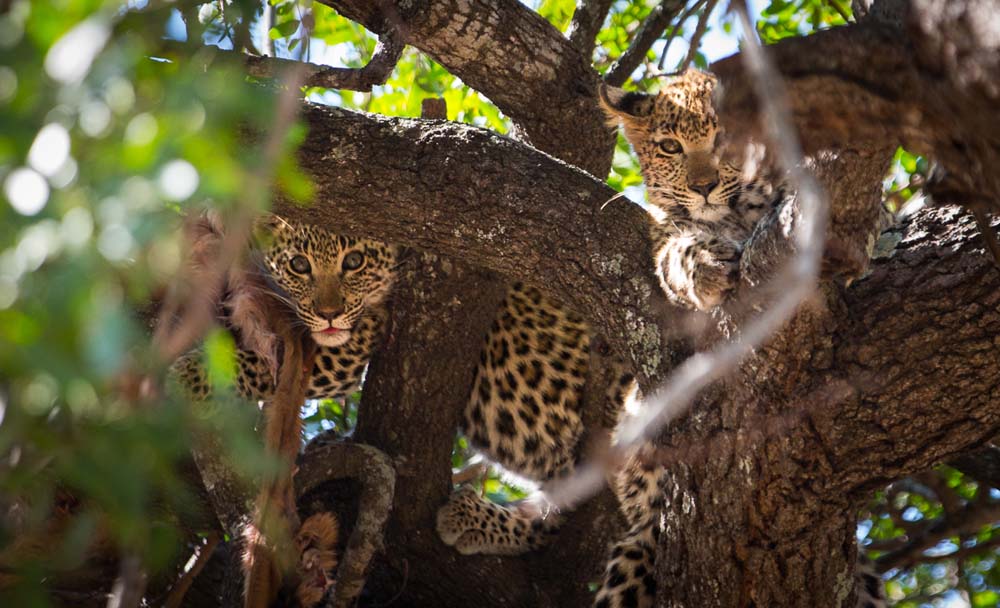
Female (surviving) cub to the left and the male cub on the right
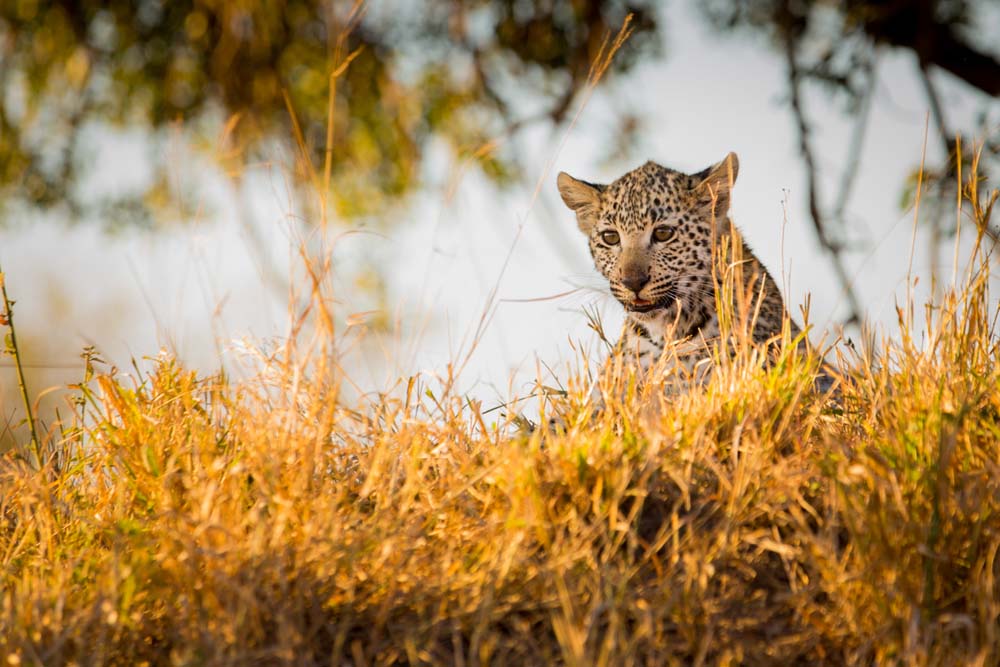
Male cub
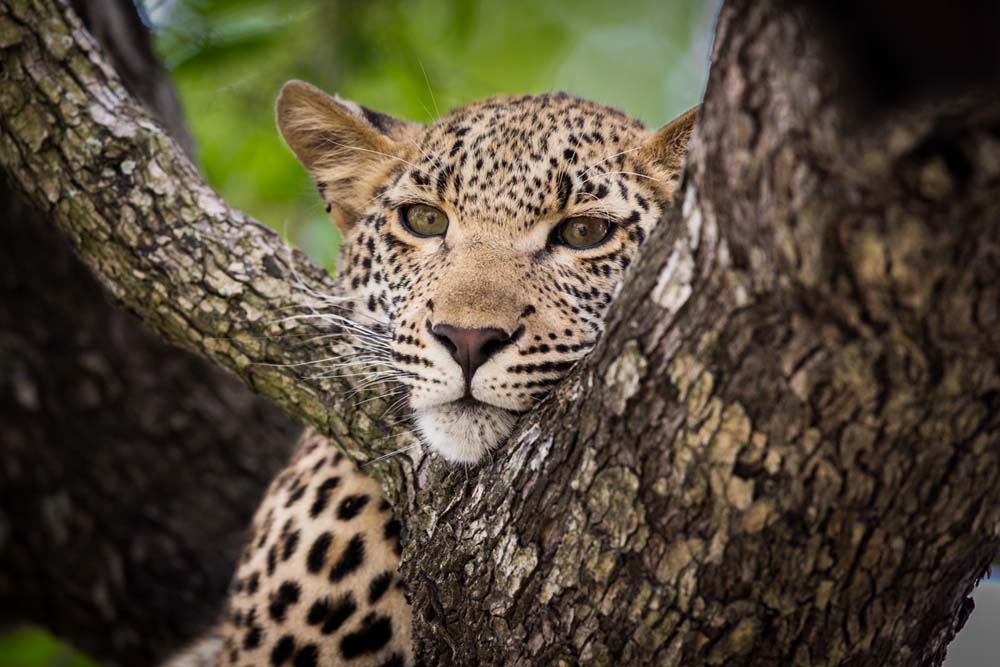
Female cub
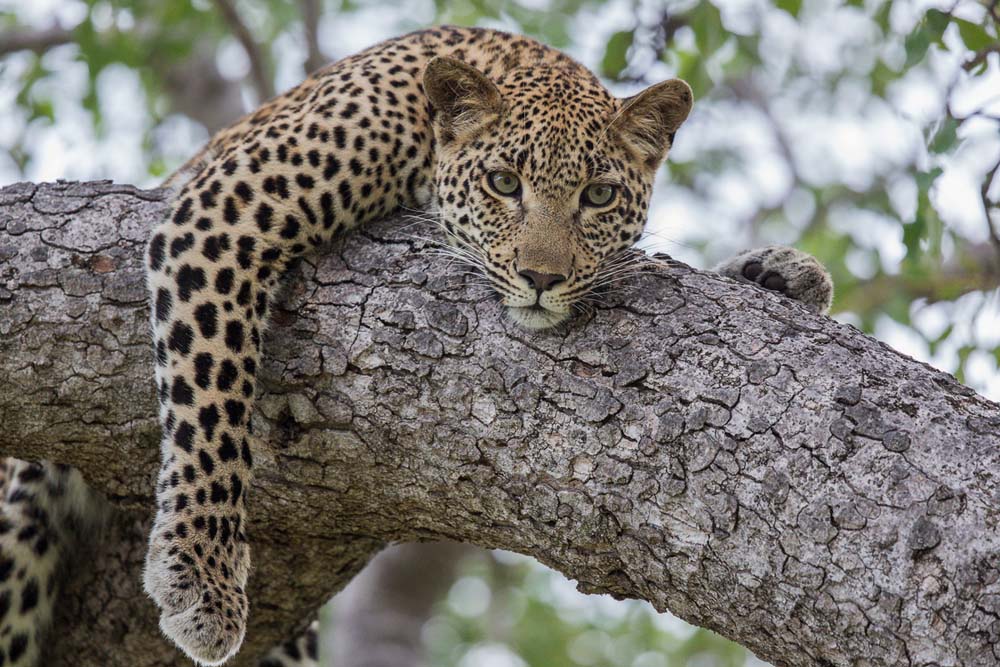
Female cub
Nottins’ Cub (8-9 months old)
I’ve saved the best for last in this three part blog. Nottins’ cub, to me, has to be my favourite leopard on the property. It might be the youngest of them all, but I have grown fond of this young male because I was one of the lucky three rangers that first laid eyes on him when we discovered Nottins’ den site. I remember the day we were following Nottins along the road when she all of a sudden stopped. Craig immediately told Steve and I to switch our engines off because she was contact calling. My excitement grew ten folds, and we knew this was it, the first time we might see her little ones. We decided to give Nottins space as she approached the den site and we only allowed one vehicle at a time to view it. Steve went first and had told us that he had visual of only one cub. Steve left after a while and then came Craig’s turn. Once Craig had left I went towards the sighting and there he was, a tiny ball of fluff with beautiful blue eyes, squealing at the vehicle, as this was the first time he has seen a vehicle. He was very curious and came a bit closer towards the vehicle. Soon enough Nottins decided to take him in her mouth and put him back in the den site. I will never forget that moment. That sighting until today has to be one of the most special sightings I have ever experienced. I remember myself shaking when photographing the cub. I just couldn’t believe our luck.
Over time I was privileged enough to watch this cub grow and this is another reason I am really fond of him. I have seen him on numerous kills that his mother provided, and watched him drop kills many times from a tree, only to see Nottins quickly retrieve the kill before pesky hyenas get hold of it. He is just as relaxed as his mother around vehicles, when his mother is around, which is a good thing for when he becomes independent. I am sure he will provide guests with exceptional sightings over the years and follows in the footsteps of his father, the Maxabeni male.
